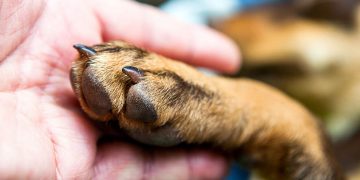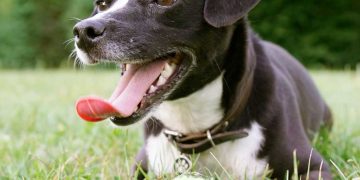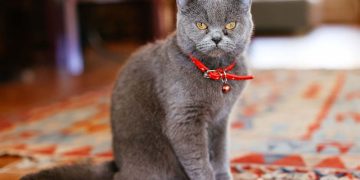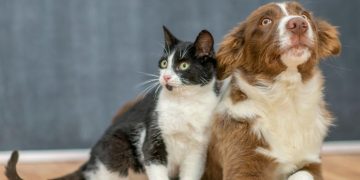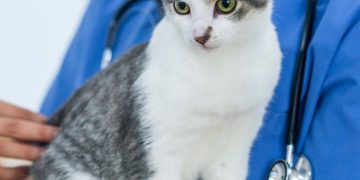Foods to Avoid Feeding Your Dog or Cat – Dehydration, diarrhea and vomiting are all common symptoms of food poisoning in you or your pet. Some of these symptoms can be life-threatening if they’re not attended to immediately by a veterinarian. If you suspect that your dog or cat has been poisoned by eating something they shouldn’t have, take them to the vet immediately!
Alcoholic Drinks
Alcoholic drinks are toxic to dogs and cats. They can cause intoxication, vomiting and even death. Alcoholic drinks can also cause alcohol poisoning which can lead to liver failure in pets. It’s important to note that many alcoholic beverages contain sugar as well as other ingredients that aren’t good for your pet’s health, such as caffeine or artificial flavors.
Some beverages are more harmful than others because they have a higher alcohol content than others; these include: beer, wine (red), vodka (or any other distilled spirit), ale or lager-style beers like those made by large breweries like Budweiser or MillerCoors.
Read More:
Apple Seeds
Apple seeds, like cherry seeds and peach pits, contain small amounts of cyanide. While the apple seed itself is not poisonous to people or pets, it can be harmful if consumed in large quantities. The amount of apple seeds your pet will need to eat in order to experience health problems depends on their size and weight; however, it can take just one or two apple seeds for a cat or small dog. If you are worried about your pet eating an apple core (you should be), make sure that you remove any remaining flesh from the interior before giving it to him/her as well.
Avocado
Avocado is toxic to all animals, but it’s especially dangerous for dogs and cats. The pit of the avocado contains a toxin called persin, which can cause severe stomach upset, vomiting and diarrhea. This can lead to dehydration in pets who are sensitive or allergic to avocados.
In addition to being toxic to your pet, avocados may also be harmful if consumed by birds or horses; however, these species have not been studied extensively so it’s unclear how much avocado would be required before an animal becomes ill (if at all).
Bread Dough
Bread dough is dangerous for dogs and cats. It contains yeast, which can be toxic to your pets.
Bread dough can also cause bloating and vomiting in dogs, as well as diarrhea or even pancreatitis in both dogs and cats.
Catnip
Catnip is a common herb that can be toxic to your cat. Canine distemper, which is caused by a virus, can also be fatal for cats.
Chocolate
Never feed your dog or cat chocolate. Chocolate contains caffeine, which is toxic to dogs. It can cause vomiting and diarrhea, among other symptoms. Your pet may experience muscle tremors or seizures if they ingest enough of the substance. Cats are not safe from chocolate’s dangers either—it can be toxic for them as well!
There are many products that contain chocolate and could be harmful to your pet when ingested in excess amounts:
- Chocolate-covered raisins
- Cocoa powder mixed into food or water
- Xylitol and carob chips (often used as a substitute for regular chocolate)
Coffee
If you’re anything like me, you enjoy a cup of coffee in the morning. But drinking too much of it can cause adverse health effects in both dogs and cats. For this reason, it’s best to avoid feeding your dog or cat any form of coffee.
Coffee can be toxic for dogs—but not cats! Dogs are more sensitive to caffeine than cats because they metabolize it differently from their feline counterparts. To put it simply: if you give your dog a cup of joe, he might experience heart palpitations, seizures (or worse), hyperactivity and vomiting as well as irregular heartbeat and arrhythmia due to its high level of caffeine content.
Garlic and Onions
Garlic and onions are members of the allium family, which also includes leeks, chives and scallions. Garlic and onion can cause anemia in dogs and cats. This is because they contain a compound called thiosulfate that damages red blood cells.
Garlic-induced hemolytic anemia (also known as Heinz body anemia) causes red blood cells to burst, releasing hemoglobin into the bloodstream. Hemoglobin clumps together with other broken pieces of red blood cells in clumps called Heinz bodies (hence the name). When your cat’s liver detects these clumps, it attacks them by producing more antibodies than normal—and when there are too many antibodies floating around in her bloodstream, her immune system starts attacking healthy tissue instead of foreign invaders like bacteria or viruses. This inflammatory response can lead to serious problems like kidney damage or thyroid gland inflammation if left unchecked.
Grapes, Raisins and Currants
If you’re a pet owner, you might be wondering about the foods that are okay for your dog or cat to eat and those which should be avoided. While it’s true that dogs can eat grapes, raisins and currants in moderation, if they consume too much of these items it could result in serious consequences.
The reason why these fruits are considered dangerous is because they contain a compound called cyanide. The seeds of these fruits contain cyanogenic glycosides that turn into hydrogen cyanide when digested by animals such as cats and dogs. Hydrogen cyanide is poisonous to animals, causing seizures and death if ingested in large amounts (see Symptoms below).
Mushrooms and Yeast
While you might think mushrooms and yeast are safe for your dog or cat to eat, the truth is that these foods can cause serious health problems for your pet. If your pet eats a mushroom or has eaten one, watch out for:
- Vomiting
- Diarrhea
- Abdominal pain (cats)
Make sure you avoid feeding your dog or cat these dangerous foods.
If you’ve ever had a pet, you know that they can be just as picky about their food as children. This is especially true with cats and dogs, who will eat only what they like. However, it’s important that both dogs and cats stick to the same diet—feeding them different foods could cause them harm.
If your dog or cat eats something that isn’t good for them and it doesn’t show any immediate signs of being sick, help prevent future incidents by keeping dangerous objects like chocolate out of reach. If your pet does become ill after eating something toxic, contact a vet immediately for help.
Conclusion
If you’re looking for healthy foods to feed your dog or cat, look no further—we’ve got you covered! These 10 foods are just some of the most dangerous ones that should be avoided at all costs. In addition to these, there are other dangerous ingredients in pet food that we haven’t listed here like artificial colors and preservatives which can cause serious problems if consumed by dogs or cats. We recommend only buying natural pet food from trusted brands and making sure it does not contain any of the above-mentioned ingredients on our list.



